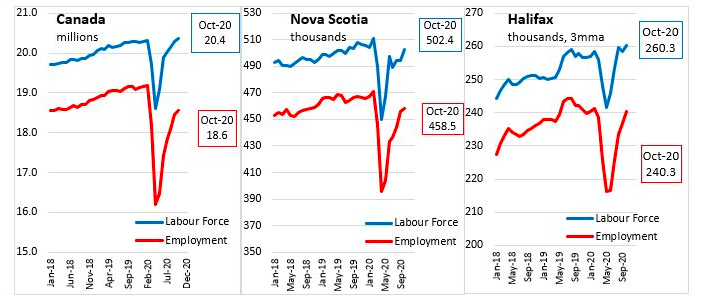COVID-19 shifts labour needs and spreads joblessness, business execs say
As of October, the long-term unemployed totalled one-quarter of all unemployed people

caption
Store closure sign at a local restaurantSylvain Duval says the Windsor, Ont., casino he works at laid off many employees, including the cooks he supervised, due to the pandemic.
“We haven’t hired anybody back yet,” Duval, a veteran sous chef at Caesars Windsor Hotel & Casino, said in an interview. “We’re not serving food. We’re not serving alcohol. It’s only the slots that are open.”
According to some business executives across Canada, Duval’s description of his casino represents the current trend and shift in employment in many industries that involve customer interaction.
Rakesh Naidu, the CEO and president of Windsor-Essex Regional Chamber of Commerce, said certain industries, including casinos, retail and hospitality, are struggling to reach previous staffing levels.
“Ten per cent is really good, but there is still room for us to improve that number,” Naidu said about Windsor’s unemployment rate for September after more jobs were created in booming sectors. “The greenhouse sector and other developments in the construction industry have created a lot of jobs and a surge in the economy during the pandemic.”

caption
Caesars Windsor Casino in Windsor, Ont.However, the trend in October, according to Statistics Canada, shows employment even in well-performing sectors has stalled in many provinces, due to new COVID-19 restrictions implemented in light of the second wave. The findings say several provinces had tightened public health measures, targeted at businesses, including the ones open to customers, where the risk of COVID transmission was thought to be greater again.
Patrick Sullivan, CEO of Halifax Chamber of Commerce, advocated for relaxing these restrictions in Nova Scotia to allow more people in the restaurants and improve the provincial employment, given Nova Scotia has fewer cases compared to the rest of Canada. However, he said the unemployment trend in Nova Scotia is “similar” to the drifts in many Canadian provinces. He echoed Naidu’s comments and said although a few sectors such as groceries and food production have been keeping up with the demand, industries such as hospitality and tourism have suffered significant job losses.
Sullivan noted unemployment in Nova Scotia has increased 6.6 per cent in October compared to the same period in 2019. In Halifax it increased 27.4 per cent compared to the same period a year ago, as quoted on the Department of Finance and Treasury Board website.

caption
Trends in labour force and employment in Canada(month over month), Nova Scotia(month over month) and Halifax(3 month moving average) as of October 2020. Reference: Statistics CanadaHe said there is a “disproportionate share” of job losses in Halifax due to more widespread job positions in restaurants and the hospitality sector within the city.
Quebec is seeing the same trends. Job creation in several sectors in that province was also cancelled out by the loss of nearly 42,000 jobs in the accommodation and restaurant sector, according to the latest findings by the Institut du Québec. The hotel and food-service sectors were the hardest hit, representing nearly two-thirds of all jobs lost in the province and increasing the unemployment rate in Quebec to 7.7 per cent from 5.0 per cent a year ago.
According to the October Labour Force Survey from Statistics Canada, long-term unemployment in Canada — defined as those who are unemployed and have been looking for work or on temporary layoff for 27 weeks or more — increased by 36.2 per cent in September and a further 50.7 per cent in October, reflecting the flow into this category of those who lost jobs in March and April and have been unemployed since then.
The report summarized September and October increases in long-term unemployment as the sharpest recorded since comparable data became available in 1976.
“The number of long-term unemployed had already exceeded the peaks observed during the 2008/2009 economic downturn,” the study stated. “As of October, the long-term unemployed totalled one-quarter of all unemployed people.”

